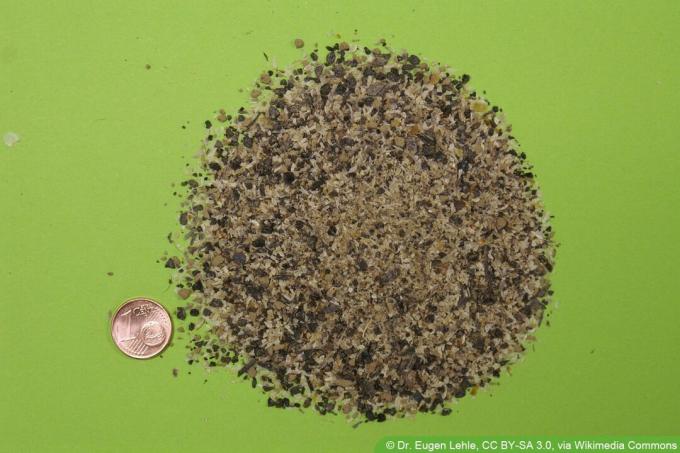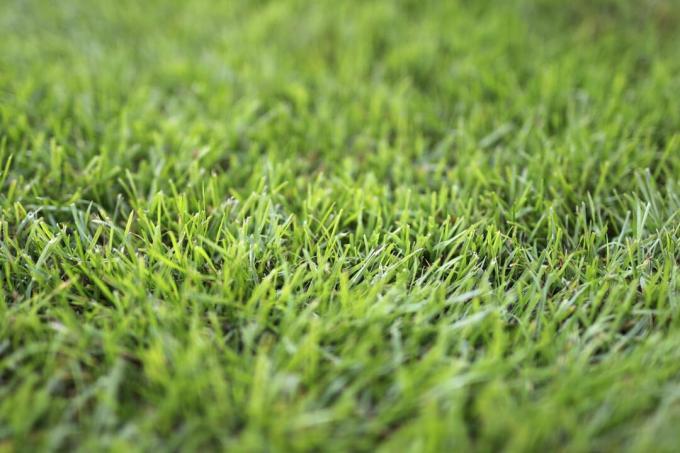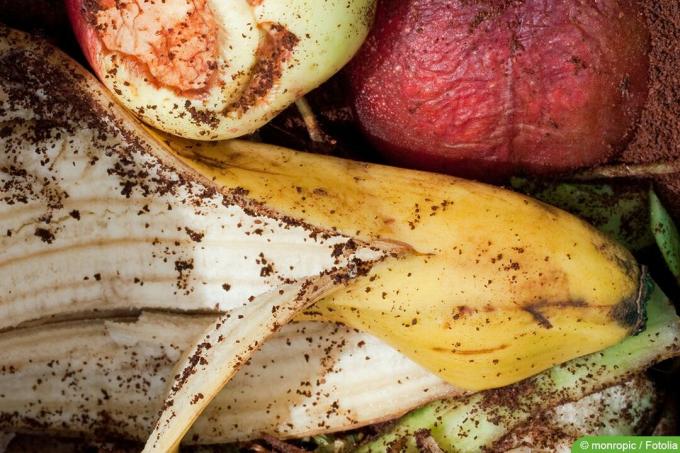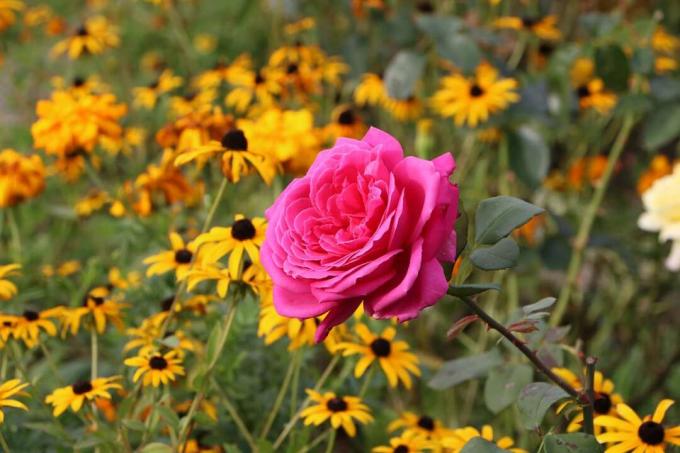

Table of contents
- clover in the lawn
- Properties horn meal
- Horn fertilizer grain sizes
- Usage Tips
- Pros & cons of horn fertilizer
Clover has no place in a well-groomed lawn. However, when a nutrient deficiency occurs, the weeds are free to thrive. Horn fertilizer counteracts this.
clover in the lawn
All types of clover grow in the lawn when the grass lacks so many nutrients that it can no longer assert itself against the weeds. Clover species have the ability to produce nitrogen themselves via nodule bacteria, so they are independent of nitrogen fertilization. They also benefit from the good site conditions, as it is usually sunny on green areas and also damp due to irrigation.
A notice:
Since clover in the lawn indicates a lack of nitrogen, other nutrients can still be in abundance.
Properties horn meal
Horn shavings are suitable as a fertilizer for green spaces due to the following properties:
- consists of the horn or claws of animals for slaughter
- available in different grain sizes
- Nitrogen content between 12 to 15 percent
- indefinitely
The horn components are decomposed in the soil by microorganisms, releasing nitrogen which in turn is used by the plants. There are no residues left on the lawn.
Horn fertilizer grain sizes

The natural fertilizer is available in different degrees of grinding. Depending on this, not only are the pieces larger, the effect also changes. The larger the pieces of horn, the longer it takes for the microorganisms in the soil to decompose them. Accordingly, the effect sets in later, but lasts longer.
horn meal
- less than 1 mm grain size
- faster effect
- repeat more often
- lasts one to two months
horn semolina
- between 1 and 5 mm grain size
- Effect is delayed
- lasts two to three months
horn shavings
- over 5 mm grain size
- slow effect
- longer lasting
- up to four months

Usage Tips
- In order for the horn fertilizer to work properly, a well-maintained soil is a prerequisite. It must be rich in humus and aerated. If horn meal is applied in spring, scarify the lawn beforehand. Also water the green area when it is dry, slightly moist but not wet soils are preferred by the decomposing microorganisms.
- Since horn shavings are a pure nitrogen fertilizer, a soil analysis can be useful. It shows which nutrients are missing and which may be in excess. For the soil analysis, cut out a piece of grass and put it aside. Take some of the soil underneath for the test, then fill it up with new soil and put the sod back on.
- If soil analysis is too time-consuming, compost can be an alternative. This supplements any missing nutrients without stressing or over-fertilizing the grass.
- The right time is in the spring when grass growth begins and then continuously at appropriate intervals until late summer. Then the fertilization is stopped. Alternatively, horn fertilizer can be applied at any time as soon as weeds appear on the lawn.
- Horn shavings usually work better when incorporated into the soil. In lawns this is a bit difficult. It is best to spread the fertilizer between the grass with a rake and then water the area. This means that horn meal in particular can penetrate the soil more easily.
- While horn fertilizer is non-toxic and harmless to pets, gloves should be worn when working with it. The wind direction also plays a role, since horn meal in particular is so fine that it is quickly inhaled.
- The application rate depends on the plants to be fertilized and is between 60 and 150 grams. Lawn needs a lot of nutrients to displace clover, so the maximum amount is used as a guide. However, horn fertilizer cannot be used to over-fertilize.
A notice:
Does the dog eat horn shavings, whether from the sack or from the bed or out of the grass, this usually does not harm him. However, the unfamiliar food or larger quantities can lead to digestive disorders.
Pros & cons of horn fertilizer
Advantages
- easy to spread, either by hand or with a shovel/spreader
- Long-term effect, next fertilization in a few weeks
- biological natural fertilizer
- does not lead to burns on plant roots, nutrients are first converted
- pH neutral, also suitable for plants that prefer acidic locations
- long shelf life, horn fertilizer does not go bad, can still be used years later
- contains no phosphate, relieves areas that are over-fertilized with phosphate
Disadvantages
- pure nitrogen fertilizer, other nutrients must be administered additionally if necessary
- Moist horn fertilizer clumps quickly, store in a dry place
- Moisture causes nitrogen to be released prematurely
- not vegan, horn fertilizer is not suitable for a vegan lifestyle
- Dusting of horn meal, even with little or no wind
- unpleasant smell of fertilizer
 garden editorial
garden editorial I write about everything that interests me in my garden.
Learn more about fertilizing

Make effective nitrogen fertilizers yourself lawn fertilizer
In order to develop optimally, plants need sufficient nutrients. For example, nitrogen, one of the main nutrients, is indispensable. If this is not present in sufficient quantities in the soil, satisfactory growth cannot take place. As a result, it must be delivered.

Dried banana peel as fertilizer | Application tips
Bananas are popular and healthy. The banana peel usually ends up in the trash. But it is far too good for that, because the dried shells are an excellent fertilizer for a variety of garden plants.

Unusual Fertilizers | 13 home remedies that can do more
Much of what accumulates in the household and usually ends up in the organic waste bin can be used to fertilize garden and/or indoor plants. They offer an ecological alternative to mineral fertilizers and score with environmental compatibility and sustainability.

Fertilizer for roses: 15 home remedies for fertilizing roses
In addition to rose fertilizer, numerous home remedies are also suitable as nutrient suppliers for roses. We present the most popular ones in this article!

Fertilize properly | What good is low-nitrogen fertilizer?
No plant can survive without nutrients. Only with optimal and needs-based care can they develop magnificently, bloom lavishly and bring rich harvests. As a result, fertilizer plays an important role in care, provided the ingredients and dosage are right.

ash as fertilizer | These 18 plants tolerate wood ash
Ash is considered a natural fertilizer that supports plants in their development. But not all plants tolerate this form of fertilization. Therefore you should take a look at your garden and/or balcony plants before applying the ash fertilizer.
